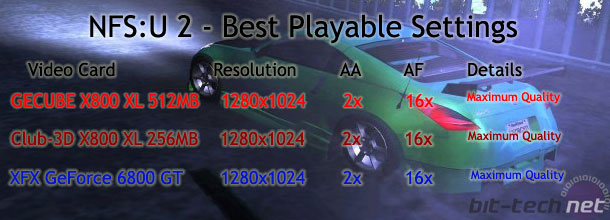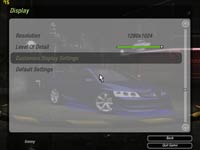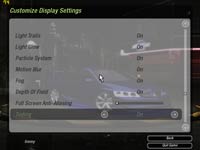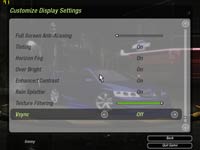NFS: Underground 2
Publisher: Electronic ArtsWe have used The Need For Speed: Underground 2 here to represent a typical driving simulator - it's based on the DirectX 9.0 API, and makes use of lots of DirectX 9.0 features, including motion blur and light trails. Anti-Aliasing was controlled from inside the game, while Anisotropic Filtering was controlled via the driver control panel.
We used a 3-lap race on the "Parkade Track 1" Street-X circuit with three opponents for our manual run through. The circuit is a fairly high-speed one, but contains lots of corners - it makes good use of motion blur and light trails.
Below is a table of the best-playable settings that we found best for each video card configuration. In this title, we found that 28 to 30 frames per second minimum and a target of 38 frames per second (or higher) for the average frame rate delivered smooth and fluid game play.

The 256MB Radeon X800 XL delivered the same average frame rate as the GeForce 6800 GT, while the minimum frame rate on the 6800 GT was three frames per second to the good of the Radeon X800 XL, making for an ever-so slightly smoother gaming experience. Spotting that difference was another matter all together, though.

MSI MPG Velox 100R Chassis Review
October 14 2021 | 15:04










Want to comment? Please log in.